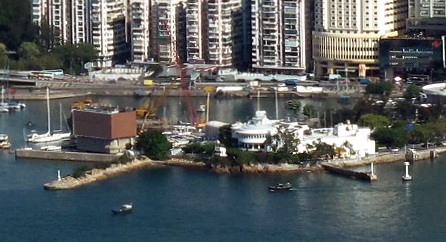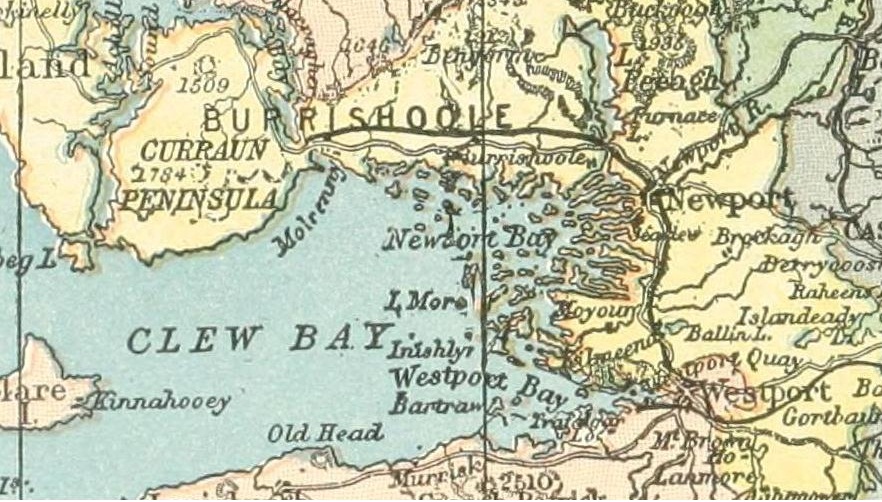|
Ruffian 23
{{Use dmy dates, date=April 2022 The Ruffian 23 is a 23-foot keelboat designed by Billy Brown in Portaferry in the early 1970s. Over 200 yachts were built during the 1970s and early 1980s by 'Weatherly Yachts', a company established by Billy Brown and his brother 'Dickie', initially in Portaferry, and later in Dublin and then in Baltimore Co. Cork. Fleets exist racing today in Dublin Bay, Carrickfergus, Hong Kong, Clew Bay and Wicklow Wicklow ( ; ga, Cill Mhantáin , meaning 'church of the toothless one'; non, Víkingaló) is the county town of County Wicklow in Ireland. It is located south of Dublin on the east coast of the island. According to the 2016 census, it has ... External links 'Story of Ruffian' by Billy Brown Sailing in Ireland Keelboats 1970s sailboat type designs ... [...More Info...] [...Related Items...] OR: [Wikipedia] [Google] [Baidu] |
Keelboat
A keelboat is a riverine cargo-capable working boat, or a small- to mid-sized recreational sailing yacht. The boats in the first category have shallow structural keels, and are nearly flat-bottomed and often used leeboards if forced in open water, while modern recreational keelboats have prominent fixed fin keels, and considerable draft. The two terms may draw from cognate words with different final meaning. A keep boat, keelboat, or keel-boat is a type of usually long, narrow cigar-shaped riverboat, or unsheltered water barge which is sometimes also called a poleboat—that is built about a slight keel and is designed as a boat built for the navigation of rivers, shallow lakes, and sometimes canals that were commonly used in America including use in great numbers by settlers making their way west in the century-plus of wide-open western American frontiers. They were also used extensively for transporting cargo to market, and for exploration and trading expeditions, for wat ... [...More Info...] [...Related Items...] OR: [Wikipedia] [Google] [Baidu] |
Portaferry
Portaferry () is a small town in County Down, Northern Ireland, at the southern end of the Ards Peninsula, near the Narrows at the entrance to Strangford Lough. It is home to the Exploris aquarium and is well known for the annual Gala Week Float Parade. It hosts its own small Marina, the Portaferry Marina. The Portaferry - Strangford Ferry service operates daily at 30-minute intervals (7.45 am to 10.45 pm) between the villages of Portaferry and Strangford, less than 1500 metres apart, conveying about 500,000 passengers per annum. It had a population of 2,514 people in the 2011 Census. Pot fishing, mainly for prawns and crabs and licensed shellfish farming takes place within Strangford Lough. Queen's University of Belfast have a Marine Research Laboratory on the shorefront and currently the town is also home to a tidal energy research project the Minesto Sea Kite. The lough is one of the world's most important marine sites with over 2,000 marine species. There are fine Georgia ... [...More Info...] [...Related Items...] OR: [Wikipedia] [Google] [Baidu] |
Dublin Bay
Dublin Bay ( ga, Cuan Bhaile Átha Cliath) is a C-shaped inlet of the Irish Sea on the east coast of Ireland. The bay is about 10 kilometres wide along its north–south base, and 7 km in length to its apex at the centre of the city of Dublin; stretching from Howth Head in the north to Dalkey Point in the south. North Bull Island is situated in the northwest part of the bay, where one of two major inshore sand banks lay, and features a 5 km long sandy beach, Dollymount Strand, fronting an internationally recognised wildfowl reserve. Many of the rivers of Dublin reach the Irish Sea at Dublin Bay: the River Liffey, with the River Dodder flow received less than 1 km inland, River Tolka, and various smaller rivers and streams. The metropolitan area of the city of Dublin surrounds three sides of the bay (the north, west, and south), while the Irish Sea lies to the east. Dublin was founded by the Vikings at the point where they were able to ford the River Liffey with t ... [...More Info...] [...Related Items...] OR: [Wikipedia] [Google] [Baidu] |
Carrickfergus Sailing Club
Carrickfergus Sailing Club is located in Carrickfergus, Northern Ireland on the north shore of Belfast Lough. The club was founded in 1866. The clubhouse moved from the building on stilts beside Carrickfergus Harbour to its current location beside Carrickfergus Marina in 1984. The club is one of the clubs on the lough that form part of the Belfast Lough Yachting Conference The clubhouse was destroyed by a fire which started around 2330 BST on 22 June 2012, thought to have been caused by an electrical fault.https://www.bbc.co.uk/news/uk-northern-ireland-18562605 , Carrickfergus Sailing club is destroyed in fire. Retrieved 23 June 2012 Racing The club runs various racing series throughout the year starting with the Spring Series at the end of March through to the Frosty Series ending mid December. Primarily the racing is for IRC, PY, White Sail, Flying Fifteen, Squib and Ruffian 23 classes. * Spring Series – late March to late April * Tuesday Series – early May to early ... [...More Info...] [...Related Items...] OR: [Wikipedia] [Google] [Baidu] |
Royal Hong Kong Yacht Club
The Royal Hong Kong Yacht Club is a Hong Kong watersports club for sailing, rowing and paddling. History In 1849 the ''Victoria Regatta Club'' was formed and later absorbed into the ''Hong Kong Boating Clu''b which, in 1889, was in turn merged into the ''Hong Kong Corinthian Sailing Club''. At the General Meeting of the Hong Kong Corinthian Sailing Club held in October 1893 a resolution was passed that application should be made to the Admiralty for permission to call the Club "The Royal Hong Kong Yacht Club" and to fly the blue ensign with a distinctive mark on the flag. A warrant was granted by the Lords of the Admiralty on 15 May 1894. Early members were British only with military personnel on the board. Until the 1950s membership was exclusively reserved for Europeans. Women were not allowed to be full members until 1977 when Patricia Loseby became the first female member. Today, membership is open to all. Unlike other organisations in Hong Kong that had been gran ... [...More Info...] [...Related Items...] OR: [Wikipedia] [Google] [Baidu] |
Clew Bay
Clew Bay (; ga, Cuan Mó) is a natural ocean bay in County Mayo, Republic of Ireland. It contains Ireland's best example of sunken drumlins. The bay is overlooked by Croagh Patrick to the south and the Nephin Range mountains of North Mayo. Clare Island guards the entrance of the bay. From the southwest part of the bay eastwards are Louisburgh, Lecanvey, Murrisk, and Westport; north of Westport is Newport, and westwards from there lies Mulranny, gateway to Achill. From the south side of the bay, between Clare Island and Achill, Bills Rocks can be seen. History The bay was anciently known in Irish as ''Cuan Mod'' 'h''("Mod Harbour") or ''Modlind'' ("Mod Pool"), and was associated with the Fir Bolg. Some writers claim that this name derives from Modh, one of the Tuatha Dé Danann. Another possibility is the Old Irish ''mod'', ''moth'', which meant "penis"; it is possible that the bay was imagined as a penis thrusting into the land. Another old name is ''Cuan Umaill'' ("h ... [...More Info...] [...Related Items...] OR: [Wikipedia] [Google] [Baidu] |
Wicklow
Wicklow ( ; ga, Cill Mhantáin , meaning 'church of the toothless one'; non, Víkingaló) is the county town of County Wicklow in Ireland. It is located south of Dublin on the east coast of the island. According to the 2016 census, it has a population of 10,584. The town is to the east of the M11 route between Dublin and Wexford. It also has railway links to Dublin, Wexford, Arklow, and Rosslare Europort. There is also a commercial port for timber and textile imports. The River Vartry is the main river flowing through the town. Geography Wicklow town forms a rough semicircle around Wicklow harbour. To the immediate north lies 'The Murrough', a grassy walking area beside the sea, and the eastern coastal strip. The Murrough is a place of growing commercial use, so much so that a road by-passing the town directly to the commercial part of the area commenced construction in 2008 and was completed in summer of 2010. The eastern coastal strip includes Wicklow bay, a crescent ... [...More Info...] [...Related Items...] OR: [Wikipedia] [Google] [Baidu] |
Sailing In Ireland
Sailing employs the wind—acting on sails, wingsails or kites—to propel a craft on the surface of the ''water'' (sailing ship, sailboat, raft, windsurfer, or kitesurfer), on ''ice'' (iceboat) or on ''land'' (land yacht) over a chosen course, which is often part of a larger plan of navigation. From prehistory until the second half of the 19th century, sailing craft were the primary means of maritime trade and transportation; exploration across the seas and oceans was reliant on sail for anything other than the shortest distances. Naval power in this period used sail to varying degrees depending on the current technology, culminating in the gun-armed sailing warships of the Age of Sail. Sail was slowly replaced by steam as the method of propulsion for ships over the latter part of the 19th century – seeing a gradual improvement in the technology of steam through a number of stepwise developments. Steam allowed scheduled services that ran at higher average speeds than sail ... [...More Info...] [...Related Items...] OR: [Wikipedia] [Google] [Baidu] |
Keelboats
A keelboat is a riverine cargo-capable working boat, or a small- to mid-sized recreational sailing yacht. The boats in the first category have shallow structural keels, and are nearly flat-bottomed and often used leeboards if forced in open water, while modern recreational keelboats have prominent fixed fin keels, and considerable draft. The two terms may draw from cognate words with different final meaning. A keep boat, keelboat, or keel-boat is a type of usually long, narrow cigar-shaped riverboat, or unsheltered water barge which is sometimes also called a poleboat—that is built about a slight keel and is designed as a boat built for the navigation of rivers, shallow lakes, and sometimes canals that were commonly used in America including use in great numbers by settlers making their way west in the century-plus of wide-open western American frontiers. They were also used extensively for transporting cargo to market, and for exploration and trading expeditions, for wa ... [...More Info...] [...Related Items...] OR: [Wikipedia] [Google] [Baidu] |





